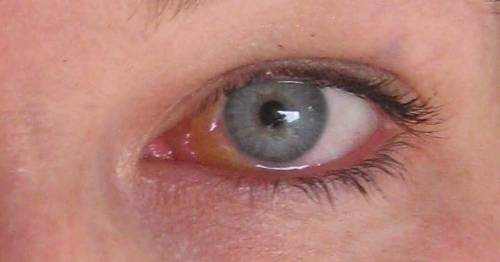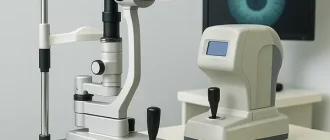Swollen tear ducts, or dacryocystitis, is an inflammation of the tear drainage system in one or both eyes that cause excessive tearing, and often inflammation and discharge in spite of there being no presence of allergies, cold, or other issues. This can happen to people at any age, however it is most generally observed in infants — with one in 3 impacted.
What Causes Swollen Tear Ducts?
In adults, infection sets in when the tear duct is obstructed, often as an outcome of the natural development pattern of surrounding bones. Their development narrows the tear ducts, causing a clog, which allows bacteria to gather and gradually grow.
Lots of babies are born with a membrane in the tear duct that does not open, or is too narrow to enable the passage of tears. This is really normal, and most of the times will be outgrown by age 1. Nevertheless, if it lasts beyond age 1, a small, normally pain-free surgery is carried out to open the duct (generally lasting 5 minutes, and performed in your doctor’s workplace).

Symptoms of Swollen Tear Ducts
Aside from observing the normal inflammation, swelling, and excess tearing present with infected tear ducts, an eye care specialist can run other tests to determine the disorder. These include pressing near the sinus area for discharge through the tear ducts, in addition to dye tests, where colored fluid is run through the tear ducts to see if they are clear.
Symptoms of Swollen Tear Ducts consist of:
- Eye and eyelid inflammation
- Eye swelling
- Excess tearing
- Eye discharge
- Fever
How Tear Ducts Get Blocked
There countless reasons for blocked tear ducts. Some babies are born with tear duct problems, most of which resolve themselves as they age.
An injury to the eye or nose can interrupt the tear ducts’ function, and even something as little as dust or dirt stuck in the tear duct can cause problems. In unusual cases, obstructed tear ducts may be brought on by a tumor. And tear duct obstruction is often a side effect of chemotherapy treatments for cancer.
Who Is at Risk for Blocked Tear Ducts
Particular factors increase your risk of establishing an obstructed tear duct. If you have chronic eye inflammation, specifically from conjunctivitis or other infections, it’s likely to impact your tear ducts.
Older women tend to be at higher risk, as are those who have had eye or sinus surgeries. Some glaucoma medications can cause obstructed tear ducts also.
Treatments for Swollen Tear Ducts
In most cases, oral antibiotics are the treatment of choice for swollen tear ducts. They are quick and effective, normally clearing the infection up in a matter of days. In some cases where infections don’t react to antibiotics, surgery may be advised to clear the tear ducts, or get rid of surrounding bones that may be triggering the tear ducts to be too narrow.
Steps to Deal with Swollen Tear Ducts
Antibiotics that can be taken by mouth are the standard treatment for tear duct infection. However, a severe infection requires initial intravenous antibiotics and observation in the medical facility.
In basic, antibiotics clean up acute infections quickly. Antibiotics are also used to treat chronic infections. In some cases, antibiotic ointment or eye drops might be prescribed. Do not try to use an over-the-counter antibiotic lotion to the eye or the area around the eye, given that non-prescription ointments are not produced usage in the eye and could have irritating active ingredients.
If the infection does not respond to antibiotics, or if infections keep returning, small surgery might be required. There are several types of surgical treatments for tear duct infections:
- Surgical penetrating of the tear duct, in which a thin wire is guided through the tear duct to clear out any blockage. This is the most typical treatment for recurring infections in infants.
- A procedure called dacryocystorhinostomy, in which the narrowed or blocked duct is broadened. This requires typically elimination of bone that has caused the duct’s narrowing. This surgery frequently is finished with the aid of a laser.
- Removing all or part of the lacrimal sac
When To Call A Professional
Call a health care expert if you or your kid experiences any of the eye symptoms of an infection, including pain, excessive tearing, soreness, swelling, or pus.
If your tear duct sore and swollen, then you should not postpone a visit to the doctor. Also, avoid trying self-treatment.
Prognosis
There are treatments for almost any cause or intensity of tear duct infection, so the outlook for this issue is right.
Many kids outgrow a problem with blocked tear ducts by the time they are one year of age.





